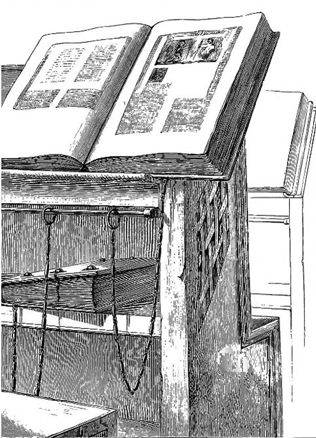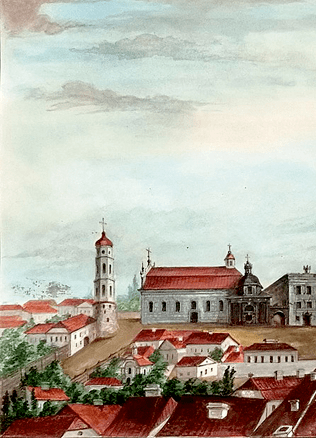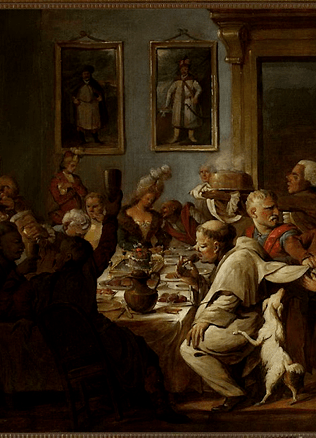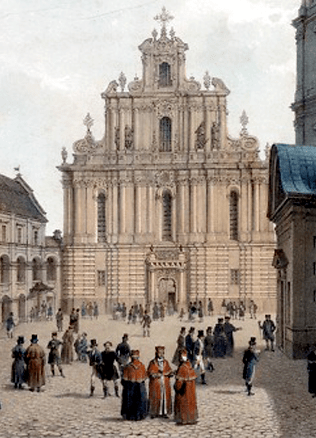Myths of Pažaislis
Myths, legends and tales enshroud mysterious and barely recognisable objects, people or events. That is exactly what the grand but mysterious ensemble of the Pažaislis Monastery looks like for people. The artistically rich monastery and church was built in the forest in the second half of the 17th century, where monks kept to the strict Rule of St. Benedict, and differently from most other monks (the Jesuits, Franciscan, and Dominican monks) they did not make their presence known in society and lived an ascetic lifestyle. Thus, it is no surprise that this kind of monastery was quickly enshrouded with various tales. Most of them were written down at the beginning of the 19th century, which is why it is thought that they were influenced by Romanticism. However, one cannot throw out the possibility that some of these tales spread among people earlier.
Explanations for the strange location of the monastery: the sins of the founder and fury of the devils
The motives for the founder of Pažaislis Monastery, GDL Chancellor Krzysztof Zygmunt Pac to build a monastery bathed in luxury in the forest far away from any settlements seem strange.
Instead of building a church in the city centre or creating a luxurious palace, he decided to spend an enormous sum of money on a closed and mysterious monastery. Though the exact sum that was spent while building the monastery was not known, there were tales told among people that the founder spent upwards of eight chests of gold (in some versions he spent eight million gold coins). Why? One version explains that Pac sinned by taking advantage of a young girl (or one of his female subjects) in the forest, and this is why, in atoning for his sins, he built such a large monastery.
According to another tale, after his wife died at a young age, he sent their only daughter to study in Italy. When she returned, she reminded him so much of his dead wife that he sinned with his daughter and bore him a son, who also quickly died. One should say, withholding comment from the legends recorded in the first half of the 19th century, that his only wife Klara Isabella outlived Pac, and they never had a daughter.
Yet another version puts Pac in a different light: at the time Pažaislis Hill was a place where evil spirits gathered, and Pac, wanting to tear up this place loved by the evil spirits, built a monastery there. In the foundation document written for the monastery in 1664, Pac mentioned just the pious aspects of the building of the monastery, and that he liked visiting Pažaislis while it was being built.
The masterfully done wall painting fooled the Swedish king
The artistic interior of the ensemble also led to the creation of many myths. In the first half of the 19th century, traveller and writer Władysław Syrokomla wrote that there was still the shoe mark left by Swedish King Charles XII on the premises of the monastery. In the beginning of the 18th century, the King Charles XII visited Pažaislis, became cold, went into the monastery and saw a fireplace with a fire near the wall. He was delighted and went closer. However, he became disappointed upon noticing that it was just an imitation of a fire burning in a hearth that had been painted on the wall. He kicked it so hard with his muddy shoe that a mark was seen even a hundred years later. Discussions about the wonderful artistic decoration of the ensemble helped to successfully spread this legend, with the key of these legends being the wonderful wall painting in the monastery, which fooled the Swedish king. Architecture not seen in these lands prompted a story that the monastery was built by an Italian named Ludovico Fredo, who later joined the monastery, died and was buried there. This version was later picked up by researchers of the monastery and was cited until the middle of the 20th century as being based in sources. In fact, there is no known Camaldolese monk who was an architect there, while the founder of it was involved in taking care of the architects that were hired (of which there were several) for its construction. It is known though that there was a portrait of one of these architects there (which has not survived), but apparently that led to discussions that he was a monk.
The everyday lives of monks shrouded in myth
The secretive monastery of Camaldolese hermits raised a number of rumours. It was said that the monks, who did not communicate among themselves would only say memento mori (“remember that you will die”) when passing by one another, would sleep in coffins put in their cells with a brick under their head to lie on. The rules of the Camaldolese monastery were strict, and promoted the life of a hermit, thus even the most accurate rumours were exaggerated. The monks would meet a few times a day for common prayer, did the work of the monastery together. There was a determined time for lectures and talking for them, and the monastery took in guests and cared for patients. However, the monks stressed contemplation and devotion to prayer, which is why their thoughts on eternity were a part of their thinking and conversations.
There is a Latin inscription that has survived on the sundial that reads: Sic memor occasus sole cadent etui (“Remember at sunset that your sun will also set”).
It was said that the bell tower of the monastery was so high because it was the only place where the monks, who did not leave the monastery, could see the world.
What’s also surprising is that the Camaldolese monks did not eat meat. At the beginning of the 19th century, writer Julian Ursyn Niemcewicz said that he saw dishes brimming with fetid water, in which the monks, who did not eat meat, were raising turtles for food. There were never any specific rules about either turtles or other seafood written about in their rules – it was only briefly mentioned that they were not to eat “any four-legged, two legged creatures and birds.” However even now while being led around the monastery sometimes one hears a mid-19th century story that persists up to the present of how the monks fed and raised turtles in the decorative wells in the area just outside the walls of the church, which they afterwards would eat.
Mindaugas Paknys



